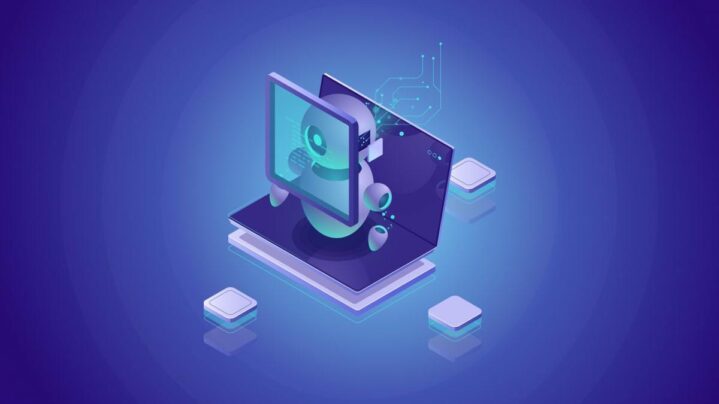Testing your code should feel like adding a safety net, not dragging an anchor.
Yet for many developers, testing often means endless hours writing cases, debugging mysterious failures, or waiting for a bloated test suite to finish before merging a simple change.
It’s the part of development that everyone knows is critical, but few truly enjoy.
Now, AI is reshaping this reality, making testing faster, smarter, and surprisingly less painful.
If you’ve ever wished for a way to catch bugs early, reduce the grind of writing and maintaining tests, and spend more of your time building features rather than fixing them, AI-powered testing is becoming the practical solution.
Why Traditional Testing Holds Teams Back

We’ve all felt it: you’re in the flow, you’ve built a new feature, and you’re excited to test it live.
But first, you need to write a series of unit tests, update integration tests, and check for regressions. By the time you’re done, your excitement has faded under a pile of test scripts.
Traditional testing slows developers down because:
- Manual test case writing is time-consuming. Even small changes require updating or rewriting test cases.
- Tests often break with minor changes. A button moves or an element’s class changes, and suddenly, half your UI tests fail.
- Debugging failing tests is frustrating. False positives or vague errors can consume entire afternoons.
- Full test suites are slow. Running every test on every commit clogs CI/CD pipelines.
While testing is non-negotiable for quality, these inefficiencies eat away at developer productivity, morale, and speed.
How AI Automates Test Creation
AI-powered testing tools remove much of the repetitive burden developers face during testing. Instead of manually crafting every unit or UI test, AI tools can:
- Analyze code changes automatically and generate relevant tests that focus on new or modified functionality.
- Simulate user behavior to cover edge cases human testers may overlook.
- Predict high-risk areas in the code using historical bug patterns, focusing your testing efforts where issues are most likely to appear.
Imagine pushing code and having your AI testing tool create targeted tests, run them in seconds, and give you a clear “safe to merge” or “needs attention” signal. It feels like having an extra team member who never gets tired of writing tests.
Smarter Debugging with AI Assistance
A test failing is one thing; figuring out why it failed is another. AI can analyze logs, stack traces, and test outcomes to pinpoint the exact part of your code that’s causing the issue.
Some AI-powered platforms even suggest likely fixes based on similar past failures, turning a two-hour debug session into a 15-minute check-and-fix cycle.
This means developers spend less time in reactive firefighting mode and more time building, refactoring, and improving the product.
Test Maintenance Without the Headaches

Anyone who has worked with automated UI tests knows the pain of brittle scripts. A minor text change or layout shift can break tests, flooding your CI pipeline with false failures.
AI testing frameworks now use self-healing technology that adapts to small UI changes automatically.
If a button’s label changes from “Submit” to “Send,” your AI-powered test doesn’t fail—it understands the context and continues, preserving test reliability without requiring manual updates.
This is a game-changer for teams relying on automated testing while iterating quickly on UI changes.
Integrating AI Testing in CI/CD Pipelines
Speed matters in modern development, but so does quality. AI-powered testing tools integrate seamlessly into your CI/CD pipeline, helping teams:
- Run targeted tests on every commit. Instead of running the entire test suite, AI identifies and executes only the most relevant tests.
- Prioritize high-risk areas. The AI evaluates code changes and predicts where failures are likely, ensuring your pipeline focuses on what matters most.
- Speed up build and deploy times. Faster testing cycles mean quicker feedback and shorter time-to-release.
This integration helps teams maintain high-quality code without slowing down delivery, a critical balance in agile environments.
Checking AI-Generated Documentation
As teams adopt AI to generate test documentation, summaries, and even test cases, maintaining transparency is essential.
If you need to verify whether documentation or a section of your test reports was generated by AI, you can use an AI content detector.
It’s a simple way to keep workflows clear when working with mixed human and AI-generated content, ensuring documentation standards and audit clarity in your development process.
Why AI Testing is Not About Replacing Developers

It’s important to understand that AI isn’t here to replace testers or developers. Instead, it acts as a force multiplier, handling the repetitive, error-prone tasks that slow humans down while enabling developers to focus on creative, high-value work.
With AI-powered testing:
- Developers spend less time writing and maintaining tests.
- Debugging becomes faster and more accurate.
- Testing doesn’t become a bottleneck during deployments
- Teams can maintain high code quality while moving fast.
AI makes testing a part of your workflow that enhances, rather than obstructs, your ability to build.
Looking Ahead: The Future of AI in Testing
AI testing is still evolving. In the near future, expect:
- Natural language to test case generation, where AI can convert user stories directly into runnable tests.
- AI-powered security testing integrated into your pipelines to catch vulnerabilities automatically.
- Predictive analytics that alert you to potential areas of instability before they cause issues.
As AI models improve, developers will continue to gain tools that reduce repetitive labor, enhance quality, and free up time to focus on building better products.
Final Thoughts
Testing doesn’t have to be a painful process that drags your projects down. With AI, testing becomes faster, smarter, and far more efficient, helping you catch issues before they reach production without slowing your team’s momentum.
If you’re looking to improve code quality while maintaining the pace your users expect, integrating AI-powered testing into your development workflow is one of the most practical steps you can take this year.
It’s not about the hype—it’s about building, testing, and shipping confidently with fewer late-night debugging sessions and more satisfied users.
